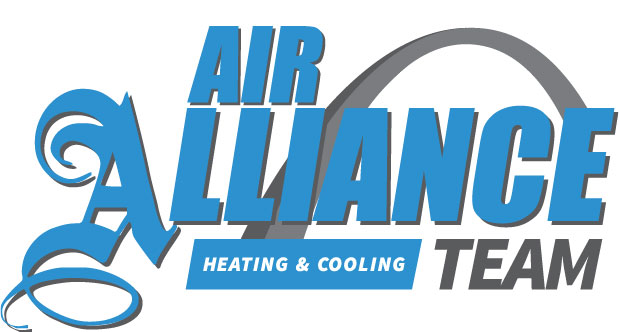
Your entire residence should be a refuge that’s warm and comfy in the winter season and cool and comfortable in the summer. However, owners of some multi-level residences find the upper floor is stubbornly hotter or colder than the first floor.
This could merely be due to the fact most thermostats in a house are on the main floor, which is where people spend the greatest amount of time—in the living room, kitchen, etc.—so it makes sense to set the temperature according to how it feels on the first floor.
However, temperature discrepancies between the upstairs and downstairs could also be caused by problems with your HVAC system. Some of these issues can be sorted out somewhat quickly while others might require more extensive and costly fixes. Here, the team at Air Alliance Team will help you determine why the upstairs of your home is hotter than downstairs, or vice versa.
Why Is It Hot Upstairs?
The phenomenon of the upstairs of a two-story home getting hotter than the downstairs can be traced to several factors. First, heat rises, so it’s natural for the second floor of a home to get hotter than the ground floor. Not enough insulation in the attic or roof can make this worse by letting heat transfer from the roof into the upstairs rooms.
Another common reason is that the HVAC system is not powerful enough to cool the entire home, causing it to struggle to cool the upstairs effectively.
To address these issues, homeowners could put in extra insulation in the attic and make sure their home has sufficient ventilation. If there’s a possibility the AC is the right size for the home, call an experienced HVAC company like Air Alliance Team inspect the unit. A qualified professional also can help find a unit that's better suited for your home if you want air conditioning installation or replacement.
Why Is My Upstairs So Cold/Not Heating?
When the downstairs of your home is warm, but it’s freezing upstairs, that could result in an ice-cold night for anyone whose bedrooms are on the upper floor. The most frequent causes of an upstairs not heating like it is supposed to are the insulation levels and the ductwork.
Inadequate insulation allows cold air to seep through the home’s attic or walls and contribute to heat loss, resulting in colder temperatures on higher floors. It’s important to make sure your home has a thick, level layer of insulation in the attic and adequate insulation in the walls to keep the cold out and the heat inside.
The ductwork in a home plays a fundamental role in distributing conditioned air throughout different rooms of the building. However, troubles with the ductwork can cause the upstairs being colder than the main level. A common cause for this is improper airflow balance. The ducts may not be the proper size or in the appropriate layout, causing an uneven distribution of air between the floors. This can cause more warm air to flow downstairs, leaving insufficient airflow—which is the heated air—on the upper story.
Another potential problem area in the ductwork is the placement of the supply and return vents. If there are fewer vents on the upper floor or they aren't well positioned, it can limit air circulation and cause inadequate heating or cooling. Additionally, leaks or gaps in the ductwork can allow air loss, lowering the overall efficiency of the HVAC system and making the temperature difference more pronounced.
To understand why the upstairs is colder than the downstairs, homeowners should hve their ductwork inspected by experienced professionals like the team at Air Alliance Team to identify any imbalances, leaks or inadequacies. Sealing leaks and installing more vents or adjusting existing ones can help improve airflow and ensure a more even temperature balance between the upstairs and downstairs.
Fixing the Hot or Cold Upstairs Problem?
If your upstairs is hotter or colder than the rest of your residence, an HVAC zoning system could be a great solution.
An HVAC zoning system separates the home into distinctive zones, which each have their own thermostat and damper system so the homeowner can customize the heating or cooling of each zone.
This system can be very useful in scenarios where the upstairs of a multi-story home is quite hot or really cold while the main floor is comfortable. By investing in a zoning system, homeowners can regulate the temperature independently in each zone, enabling them to address specific hot or cold spots effortlessly.
To learn more about an HVAC zoning system in Ballwin and St. Charles, call Air Alliance Team. We’ve designed and installed customized home comfort plans for many community members and are happy to show how an HVAC zoning system could work in your home.
Why Is it So Humid Upstairs?
In addition to the upper story being hotter or colder than the rest of the house, another issue in multi-floor homes is when the higher levels are more humid than the first floor.
A common cause for excess upper floor humidity is weak ventilation on the upper floor, which can result in increased humidity levels. As is often the case with temperature differences between floors, inadequate insulation or sealing in the attic or walls may permit warm, humid air from outside the house infiltrate the upstairs rooms. In addition, if there are any leaks or plumbing issues on the upper floor, that can also lead to excessive moisture in that section of a home.
To address humidity problems, homeowners can increase ventilation by installing fans or opening windows to promote airflow. Adding more insulation in the attic and better sealing the attic and walls can help prevent external moisture from entering the upstairs. Locating and repairing any leaks or plumbing issues is also extremely important.
Depending on the levels of moisture found in the home, a whole-home dehumidifier could be another valuable tool to reduce humidity on the upper and lower floors.
